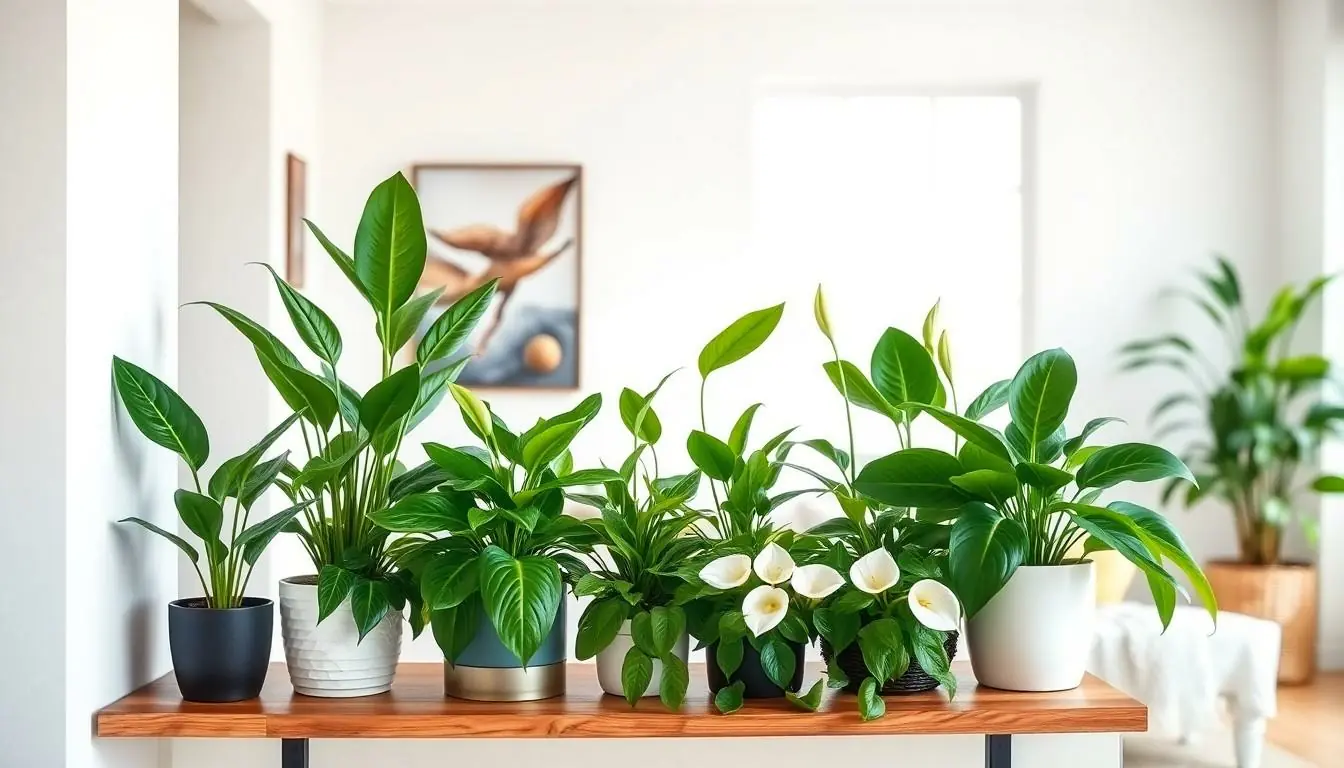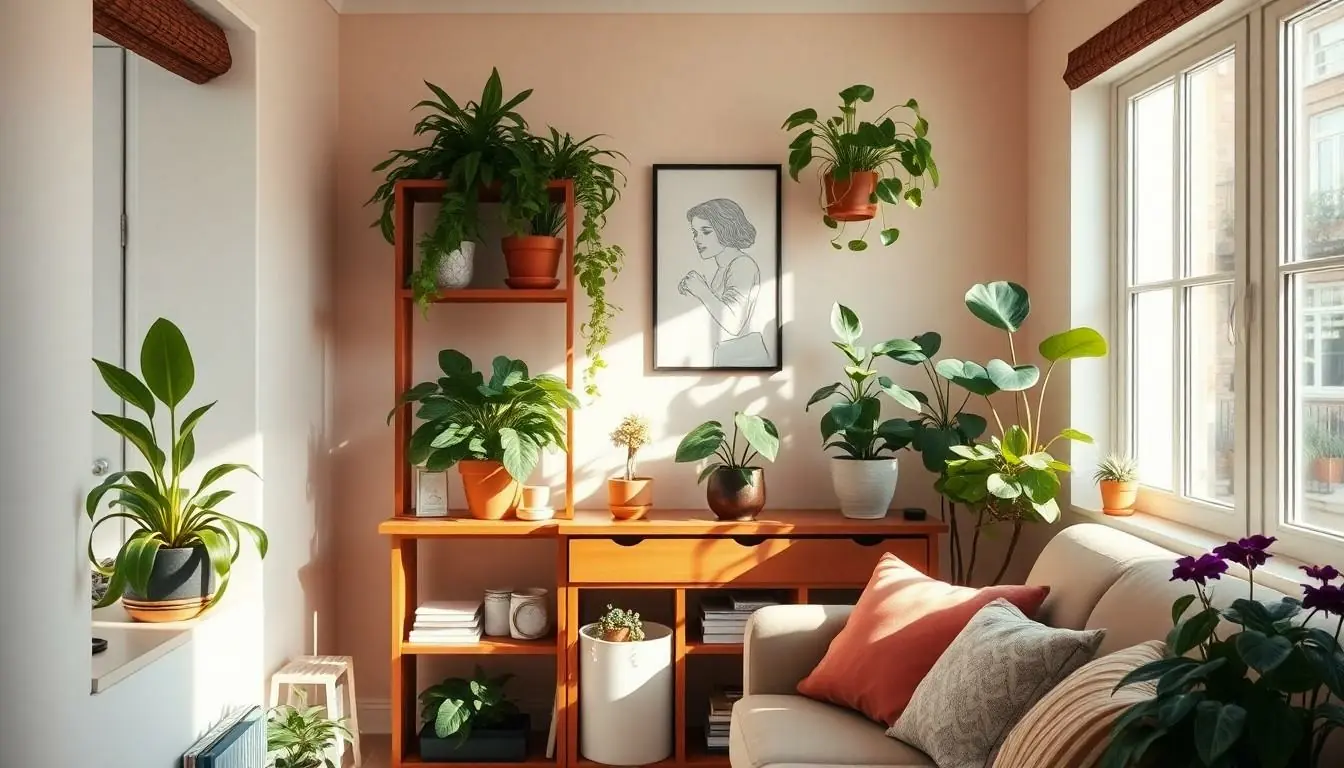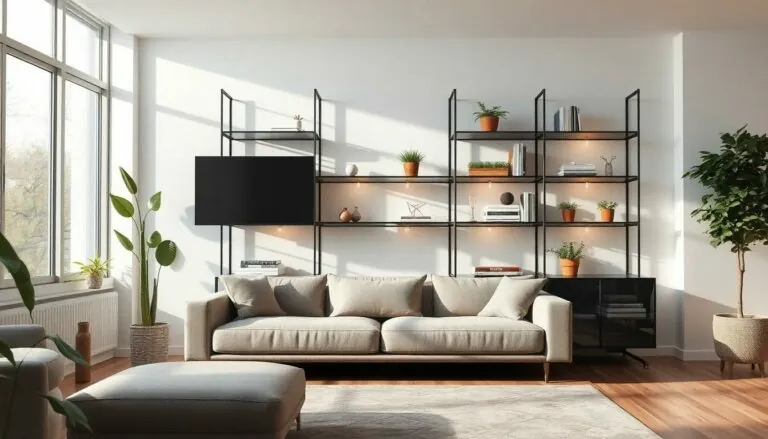House plants are like the roommates that never leave dirty dishes in the sink. They brighten up any space and bring a touch of nature indoors, making them the perfect companions for anyone looking to spruce up their home. If you’re tired of staring at blank walls or lifeless furniture, it’s time to invite some greenery into your life.
Table of Contents
ToggleOverview of Common House Plants
House plants serve as perfect companions for enhancing living spaces. They brighten homes and add a touch of nature to indoor environments.
Benefits of Having House Plants
House plants provide numerous advantages for both health and aesthetics. Improved air quality results from plants absorbing toxins and releasing oxygen. Increased humidity can alleviate respiratory issues and skin irritation. Studies show that engaging with plants reduces stress and promotes mental well-being. Additionally, house plants contribute to increased productivity and creativity in workspaces. Every plant, from succulents to ferns, can play a role in cultivating a more inviting atmosphere.
Importance of Choosing the Right Plants
Selecting suitable house plants ensures a thriving indoor garden. Different plants require varying light conditions, from bright to low light. Some need regular watering, while others thrive on neglect. Specific plants, such as snake plants and pothos, prove resilient for beginners. Knowing one’s lifestyle helps identify the right options for growth and maintenance. Healthy plants enhance decor, offer unique visual appeal, and improve overall well-being.
Popular Common House Plants Names

House plants bring life and beauty into homes. Various popular types cater to different preferences and care levels.
Low Maintenance Plants
Snake plants require minimal care and adapt to low light. Pothos thrives in various conditions and tolerates neglect. ZZ plants grow slowly but can survive in nearly any environment. Spider plants flourish with little attention and produce baby plants. Cast-iron plants endure tough conditions, making them perfect for beginners.
Flowering House Plants
African violets bloom all year with the right light and humidity. Peace lilies produce beautiful white flowers and grow well in low light. Orchids offer exotic flares with numerous species and colors available. Bromeliads feature unique blooms and thrive in bright, indirect light. Christmas cacti add seasonal cheer with vibrant flowers during the holidays.
Air-Purifying Plants
Aloe vera not only soothes skin but helps purify indoor air. Boston ferns effectively filter toxins and improve humidity levels. Rubber plants thrive in low light while removing pollutants from the air. Dracaena species effectively eliminate harmful chemicals like formaldehyde. Spider plants are also known for their air-purifying qualities, making them versatile additions to any space.
Tips for Caring for Common House Plants
Caring for house plants requires attention to specific needs. Understanding their requirements promotes healthy growth and vibrant appearance.
Watering and Light Requirements
Plants thrive with proper watering and light. Each species has unique preferences, so identifying those preferences aids in caring for them effectively. For instance, snake plants tolerate low light, while pothos flourishes in brighter spots. Watering frequency varies; some plants prefer dry conditions, while others require regular moisture. Overwatering leads to root rot and should be avoided. Checking the top inch of soil for dryness serves as a helpful guideline. Adapting to specific light conditions significantly enhances plant vitality, allowing for optimum photosynthesis.
Soil and Potting Considerations
Choosing the right soil mix is essential for house plants. Well-draining soil prevents water retention and promotes healthy root development. Consider using potting mixes tailored for specific plant types, such as orchid bark for orchids or cactus mix for succulents. Selecting pots with drainage holes ensures excess water escapes, reducing the risk of overwatering. Repotting becomes necessary when roots outgrow their container; this often happens once every 1-2 years. Providing adequate space fosters growth and maintains overall plant health.
House plants are more than just decorative elements; they’re essential companions that enhance both the beauty and health of living spaces. By selecting the right plants, individuals can create a thriving indoor environment that reflects their personal style while also benefiting their well-being. Whether it’s the low-maintenance snake plant or the vibrant peace lily, each plant offers unique advantages that cater to various lifestyles and preferences. With a bit of care and attention, these green friends can transform any home into a serene oasis, making it a joy to come home to. Embracing house plants is a simple yet effective way to foster a more inviting and productive atmosphere.





